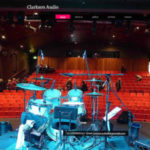Forums › Forums › Qu Forums › Qu DAW integration › Custom Made FX Mute Foot Switch (TCP/IP)
Tagged: Custom, Foot Switch, FX Mute, QU-16, Tap Tempo
- This topic has 66 replies, 16 voices, and was last updated 8 years ago by
knga.
-
AuthorPosts
-
2014/05/09 at 12:14 pm #39676
DocDocDocDoc
ParticipantI just checked into Raspberry Pi a bit… since I’m working as a nerd in my day-time job, I’m quite familiar with Linux and computer programming in several languages.
Is there any documentation of the protocol resp. the MIDI-over-TCP/IP communication that the Qu16 does?
Best
Doc42014/05/09 at 3:54 pm #39679 Nicola A&HKeymaster
Nicola A&HKeymasterThe MIDI/TCP specs are available on our main website here.
2014/06/22 at 3:55 pm #40303 GR-PDXParticipant
GR-PDXParticipantAny progress on this? I am still interested!
2014/06/22 at 4:20 pm #40306 Lee7Participant
Lee7ParticipantOur techie Steve had made a dummy pedal just to test the A&H protocol’s and if disconnected from the desk how long it would take to reconnect etc. This was a few weeks ago, Steve is doing work on this progress in between other jobs and due myself being busy recently with the band I haven’t had chance to speak to him about it.
I will make contact this week with Steve and find out how the progress is going and what sort of time scale we’re looking at. I think initially he will make about 6 pedals and see what interest is out there before making a loud of them only to collect dust in the corner of his workshop.
Thanks
Lee2014/06/23 at 7:27 am #40318DocDocDocDoc
ParticipantI’m also working on something similar – a RaspberryPi-based foot switch. Just yesterday, I ordered an guitar amp foot switch that is supposed to serve as a housing for the entire thing. The program I wrote talks to buttons and LEDs already, but not yet to the Qu16.
It turned out that in order to do this properly, quite some working hours need to be invested. Hence, my solution will remain a quick hack that I’ll perhaps grow into something real once A&H fulfill some wishes: a) multiple connections to the Qu16 (so far, it is iPad XOR foot switch), and perhaps b) soft keys triggered via MIDI (https://community.allen-heath.com/forums/topic/softkeys-triggerd-via-midi).
Ah, and of course in the meanwhile I got an Qu16 and it is really a great piece of gear. Looking forward to our first show with it!
Best
Doc42014/06/23 at 2:28 pm #40336Anonymous
InactiveHow about a hardware mod? A three or four pin cable connection to one of the softkeys, with an LED and a momentary foot switch on the other side, connected to the LED and momentary switch of the softkey respectively (LEDs in series, switches in parallel)? That would be the simplest one, but a separate hole and a little soldering on the Qu would be needed.
You loose the warranty, yes. But in five years all these cheep digital units will be obsolete anyway.
2014/06/23 at 2:47 pm #40338 Lee7Participant
Lee7ParticipantThat option was discussed and quickly forgot about, Steve said he could quite easily mod the QU-16 were a foot switch could be plugged in like desks of old, but if something was to go wrong whilst still under warranty, you would be screwed. And in turn could potentially face a a hefty repair bill, so why take that risk. Better to pay a little more rather than save in the possible short term.
🙂
2014/06/23 at 3:24 pm #40339DocDocDocDoc
ParticipantModding the Qu-16 would not only make you loose warranty, but also something else: The possibility to replace a broken Qu-16 by another one, re-install your presets from an USB key and go on with the show. Furthermore, a Qu-16 foot switch will most likely also work for your future Qu-24 or the Qu-32. 🙂
Actually I don’t agree with GuitarHero that in five years a Qu-16 will be obsolete. After all, I started out into the digital mixing world with a DDX3216 that I had gotten used and stuck to that for 6 years or so – only replacing it by a 91V96i, because the preamps and converters sucked – which is for sure not the case for the Qu-16. (The usage scenario of the DDX3216 was quite different from what I’m doing with the Qu-16, so it’s not entirely comparable.)
Today I started to get into a more advanced design of my control program – let’s see which one will make it faster into the device, the quick hack or the real stuff. 🙂
Best
Doc42014/06/27 at 6:13 pm #40406Anonymous
InactiveOk, so you think this unit will have any value higher than 200€-300€ in five years…Well…
But I understand the other reasons.Then how about this: AMT FS-2 Midi -> Kenton Midi USB host -> Qu16
I don’t know if that works, haven’t tried myself. But according to the specs of the units it should do.2014/06/27 at 7:22 pm #40408DocDocDocDoc
ParticipantLet’s talk again in 5 years about this. 🙂
I just plugged the Qu-16 into a Linux box via USB and it showed up as a class compliant USB-Midi Interface and a 18channel I/O audio interface. Hence the Kenton MID USB host should be able to deal with it. So in the end it depends on the question whether or not the AMT FS-2 will send the right messages.
For my foot switch project based on a RaspberryPi, this means I can probably use the Linux USB-Midi drivers instead of a network connection, which could be easier. So far I have the hardware ready talking to buttons and LEDs with a message-controller-based architecture… it just doesn’t talk to the Qu-16 yet. My plan is to have the LEDs on the foot switch also update when you operate the same functions on the Qu-16’s surface.
Could anyone from A&H answer the following question: Can the Qu-16 talk MIDI to a computer via USB and to an iPad via the network simultaniously? This would definetley make me go for the USB solution.
Best
Doc42014/06/28 at 1:11 pm #40417DocDocDocDoc
Participanthttps://niels.drni.de/stuff/quPy.jpg <- got the hardware up and running, but the “firmware” still has a bit of trouble talking via USB… TCP/IP is less attractive but seems to be easier to do. Loads of working hours, probably not worth the effort if you can spent your time on doing paid gigs with the Qu16 instead…
Doc4
2014/06/29 at 12:48 am #40423Anonymous
InactiveWow, that looks nice! Good work!
2014/06/29 at 9:33 am #40425DocDocDocDoc
ParticipantDear A&H folks!
would it be possible for you to publish the fancy formula that computes the NRPN parameter values for the delay time, say from seconds or millisec?
I figured out how approximately compute the coarse value, but it’s really not that easy to get to the fine-grained values or any precise formula just from the table with examples.
Best
Doc42014/06/29 at 5:18 pm #40429mervaka
ParticipantWould it be possible to use a lookup table?
2014/06/29 at 5:54 pm #40430DocDocDocDoc
ParticipantThe examples in the MIDI documentation are too few for a lookup table, especially since the relation is logarithmic. One could of course “sniff” a table from the MIDI output of the Qu, which would be quite cumbersome. Furthermore, it is hard to step through exact msec values with the data knob.
-
AuthorPosts
- You must be logged in to reply to this topic.